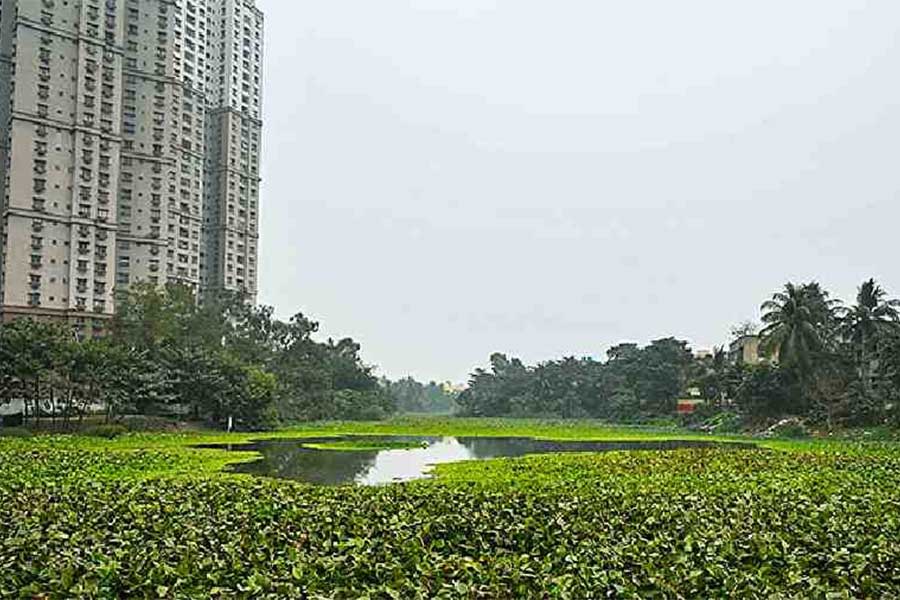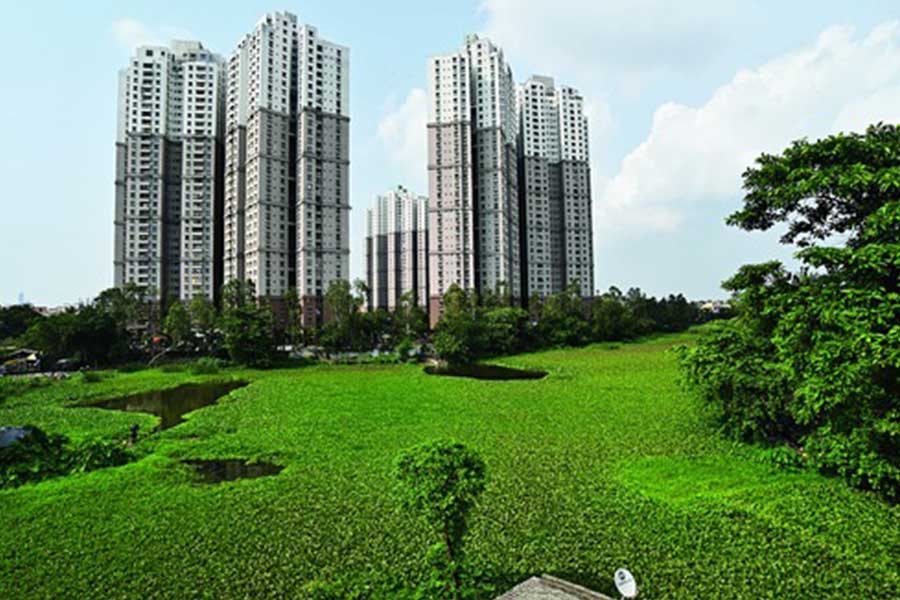No part of Kolkata — not even the area around the chief minister’s home (Kalighat) or that of the mayor (Chetla) — is spared the effects of the rising Celsius, a recent study undertaken by a frontline environmental organisation of the country has found out.
The report, prepared by the Centre for Science and Environment (CSE), has estimated that close to half of wards within the Kolkata Municipal Corporation limits fall in the category of either ‘high’ or ‘moderate’ heat vulnerability.
The analysis, a copy of which is with The Plurals News Network, attributes the rising average Celsius in Kolkata to ‘shrinking’ green verge and water bodies, earning the label of the global topper in average heat rise over past six decades in a 2021 UN report.
“Heatwaves are major threats to any city in India with high population and Kolkata is no exception. The city needs a heat action plan at the earliest,” said Subimal Ghosh, a climate scientist at the Indian Institute of Technology, Mumbai, and also a lead author of the IPCC report.
City on boil
The 2022-23 CSE study report that covered nine cities, including Kolkata, found that “47.2 per cent wards in Kolkata are highly to moderately vulnerable to heat”.
Overall, 15 wards in the city were tagged as ‘high heat vulnerable’ with another 53 having ‘moderate’ status; including ward numbers 73 and 82, where chief minister Mamata Banerjee and city mayor Firhad Hakim live, respectively. While 55 wards were identified as ‘low heat vulnerable’, only 21 wards, mainly spread in the city’s southern and eastern fringes, were found not being heat - vulnerable.
The report card also pointed out that “70 per cent slums fall in the recurrent heat stressed areas” almost throughout the entire length and breadth of Kolkata”, incidentally nearly one-third of the city’s resident population of around 4.5 million, live in slums.
The Kolkata heat map shows that the northern part of the city stands more affected with almost non-existent ‘no heat vulnerable’ ward. The high heat vulnerable wards include 6, 13, 14, 29, 32, 46 in the north covering Cossipore, Maniktala, Narkeldanga, Kankurgachi, Ultadanga and Esplanade regions.
Wards 75, 79, 80, 81 covering Hastings, Alipore, New Alipore and Kidderpore areas; wards 58 and 66 - Tiljala, Topsia and Tangra around EM Bypass – ward 134 in Garden Reach; and wards 116 and 129 in Behala; were also found with ‘high’ vulnerability.
Satellite data and ground findings collated
“CSE conducted a study across nine cities, including Kolkata. Utilising satellite data considering the hottest month of each year from 2014 to 2023, we looked for areas where the land surface temperatures exceeded 45°C; this threshold was established in line with the India Meteorological Department’s criteria for a heat wave and scientific literature,” Rajneesh Sareen of CSE, who led the study, told this agency.
“In Kolkata, we visited the heat centres, captured the physical features and activities, and identified the contributors to heat. We considered the status of blue-green infrastructure, population at risk and their heat adaptability apart from the heat factor in the area to assess the vulnerability,” he further added. Heat centres are those areas where land surface temperature reach 45 degree Celsius or more 6 or more years within 10 years.

Water body diminished by 39% in 20 years
The CSE analysis found that the city’s water body has decreased by a whopping 39 per cent; vegetation by 19 per cent, while built-up area increased by nine per cent during 1999 -2021; resulting in the shooting up of average heat.
The Assessment Report - 6 of UN body Intergovernmental Panel on Climate Change found that Kolkata recorded the highest rise in surface air temperature within the studied cities and regions across the world from 1950 to 2018 — 2.6°C — followed by Tehran and Moscow.
“Climate adaptation is crucial and needs to involve extensive monitoring of temperature and humidity within the city, implementing a local-scale early warning system, and prompt dissemination of alerts to the public,” observed Ghosh of IIT Mumbai, adding that “we can say with high confidence that extreme heat and heat wave phenomena are going to increase in cities like Kolkata and hence, it definitely needs a heat action plan.”
“We are working on a city climate action plan and mitigating heat is definitely one of its key components,” a senior Kolkata Municipal Corporation official told this reporter.






